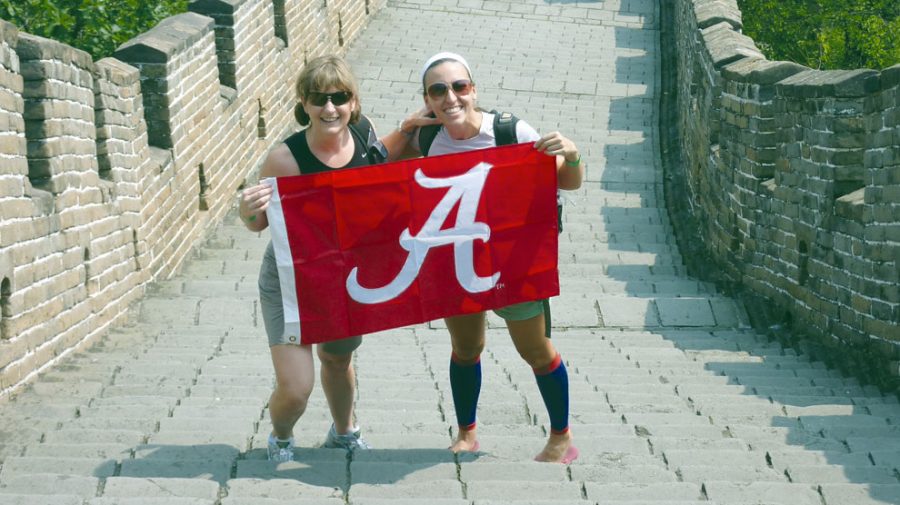Competing in a sport that combines swimming, biking and running might be daunting for some people, but for UA professor Catherine Pagani, not only is it possible, it’s fun.
Pagani recently returned from a 10-day trip to Beijing for the International Triathlon Union World Championship. She represented Team USA in the sprint distance triathlon, which consisted of a .45 mile swim, 13.2 mile bike ride and 5K run.
“I started out just running,” Pagani said. “There were people in my running group who biked, and I could already swim, so that’s how I got involved with triathlons.”
Pagani’s first triathlon was a half Ironman, which is much longer than a sprint triathlon.
“I like the level of fitness of triathlons,” she said. “Training is never boring if you train smart. There is something so wonderful about learning your limits in a controlled way and building up to three sports.”
Last September, she competed in the USA Triathlon National Championship held in Tuscaloosa along the Black Warrior River and qualified to race in Beijing.
She also teaches Asian art history, and she has traveled to Beijing several times before, though she had never been to the part of the city where the race was held.
“The course was located in northern Beijing,” she said. “It was so pretty with rolling hills and the island with a pagoda. It felt great being back there.”
The race venue in Beijing was the same one used for the 2008 Olympics and has since been upgraded. The swimming leg of the race took place in a reservoir near the historical Ming Tombs.
“I finished the swim leg in fourth place and that felt awesome,” she said. “However, there was a downpour of rain making the biking my weakest leg. It was a very technical course and I lost my top spot because of that.”
Pagani said that, overall, she was happy with her run and her race, and transitioning is often considered the fourth event. If a person is not strong and precise with transitions, they can lose a race.
“One of the biggest challenges with this sport is balancing the commitment of a job and the needs of the sport,” she said. “I usually get up early in the morning for a run or teach a spin class, and then do something late in the afternoon too.”
She structures her weeks around training, with Saturday and Sunday being important days for training events such as long distance runs.
“Getting enough rest is important,” she said. “Cutting back on sleep and nutrition is the worst thing you can do. You have to stick with a routine.”
When Pagani became the chair of the art department, she said she let aspects of the job consume much of her life, and exercise became a way for her to help alleviate the stress.
“It is important to have a regular exercise routine,” she said. “It makes me happier and more efficient with my job.”
She was inspired by the multiple 80-year-old racers who took home gold medals and plans to continue racing for as long as she can.
“Going abroad was not just about competing,” she said. “I did it all by myself, with all my stuff. It was an adventure, and it’s all about personal challenges.”









